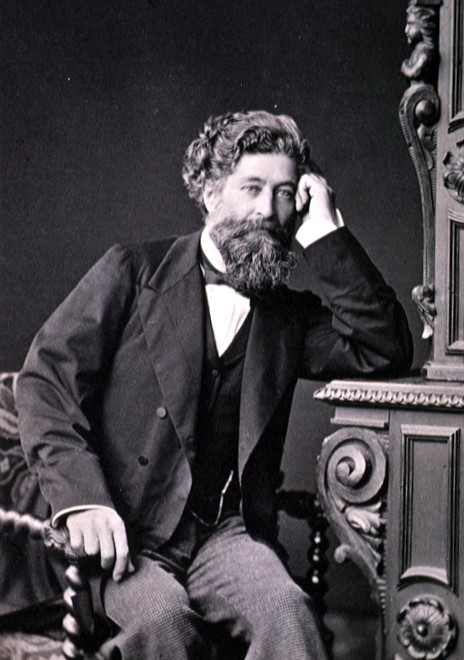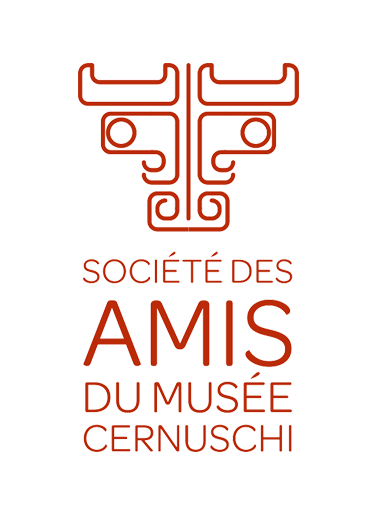
Le Cernuschi Museum, Art Museum of Asia of the City of Paris
Henri Cernuschi's mansion is a theatrically designed space to transport the visitor into the atmosphere of an Asian temple that contrasts with the Haussmannian Paris where it is located. If the museum has kept this potential for wonder on its visitors, it must accompany them in their visit by giving them the essential keys to understanding the art of Asia. This vast nineteenth century residence is a human-sized museum space that allows visitors to travel, in almost an hour, over six thousand years of Asian art.
The Cernuschi Museum from the 19th to the 21st century
The Cernuschi Museum is the legacy of nearly 140 years of discoveries marked by the evolution of the gaze focused on Asian art. Established at the time when the Impressionists were passionate about Japanese prints, the collection brought back from Asia by Henri Cernuschi was to make his hotel on avenue Vélasquez one of the high places of Japonism from 1876 to 1896.
When the museum was opened to the public in 1898, it quickly became the scene of spectacular exhibitions devoted to the different forms of artistic expression of China and Japan. From 1910 to 1946, important archeological discoveries in China and Vietnam helped to give a new face to the Cernuschi Museum, which has now been consecrated in a privileged way to Chinese antiquity, considered as the cradle of Far Eastern cultures.
From 1946, the Cernuschi Museum has opened up to living Asian arts, such as Japanese ceramics or contemporary Chinese painting. From the 1950 years to the 1990 years, this particular field was the subject of a very active acquisition and exhibition policy which made it possible to constitute one of the first collections in Europe.
Following the policy of reforms inaugurated in China in the 1980 years, the major Chinese museums began to open up internationally: during the next two decades the Cernuschi Museum became the preferred place for major exhibitions from China allows the Parisian public to discover the bronzes of the Shanghai Museum, the origins of celadon, or the spectacular Shandong Buddhas.
Finally, the renovation of the Cernuschi museum contributed to the valorization of its ancient collections
modern and evolving image: the international influence of exhibitions devoted to Chinese, Korean and Vietnamese artists has indeed made it possible to reaffirm the close links between the Cernuschi Museum and Asian artists active in Paris, yesterday and today. 'hui.
From the nineteenth to the twenty-first century the residence of the traveler and pioneer of Japonisme has become the home of Asian artists from Paris.

Henri cernuschi
The Cernuschi Museum, specializing in the art and archeology of ancient China, bears the name of its founder, ardent Republican, to the eventful life.
Henri Cernuschi born 19 February 1821 in Milan, from a family from Monza. After studying science in Milan and law in Pavia, he obtained in 1846 a patent lawyer. After his participation in the liberation of Milan from the Austrian yoke, he was elected deputy of the ephemeral Roman Republic. Arrested and tried in 1850, he gets to take refuge in Paris.
Friend of Gambetta, he takes an active part in the French political life and is naturalized French in 1871.
The same year, he decided to undertake a trip around the world in the company of Théodore Duret. This trip to Japan and China allows him to build an important collection, especially bronzes of all times. Upon his return, he presents his collection in 1873 at an Orientale Exhibition at the Palais de l'Industrie. The success was considerable both among the curious and modern artists, then fascinated by Japanese works.
Having built a small mansion at the edge of Monceau Park, he installs the Great Buddha Meguro reported from Japan.
Largely withdrawn from politics, Cernuschi, a glitzy bachelor, spent his time traveling and leading an intellectual and brilliant social life.
He died on 11 May 1896 bequeathing to the City of Paris his mansion and the five thousand works of his collection of Asian art.
Major Donors of the Cernuschi Museum
- Miss Pauline Tarn aka Renée Vivien
- Mr Léon Wannieck
- Mr Albert Bouasse-Lebel
- Mr. Loo Ching-Tsai
- Mr. Zang Renzen (Tsang Jen-tsei)
- Society of Friends of the Cernuschi Museum
- Mr. Georges Morhange
- Ms. Jacques Doucet
- Mr Jean Daridan
- Dr. Guo Yushou (Kuo Yu-shou)
- Mr. Zhang Daqian
- Ms Marie-Madeleine Wannieck
- Ms. Pfister
- Mr Jean Mahé
- Dr. Odette Jurain, in memory of Dr. Henri Mondor
- Mr. Pierre David-Weill, in memory of his Parents
- Mr Roger Truptil
- Mr. Paul-François de Laveaucoupet, on behalf of Mrs. Aimery de Feydeau, in memory of Madeleine and Louis Chappée
- Mr Antoni Laurent
- Mr Jean-Michel Beurdeley
- Mr Pierre Mocquard
- Mr Jacques Barrère
- Mr. Wu Guanzhong
- Elf Foundation
- Mr and Mrs Christian and Agnès Deydier
- Mrs and Mr Josette and Theo Schulmann
- Mr. and Mrs. Yves and Lotus Mahé
- AIRBUS company
- Mr and Mrs Gilbert Zuellig
- Dr. Stephen Zuellig
- Mr and Mrs Guy Ullens
- Mr and Mrs Philippe Wahl
- Total company



